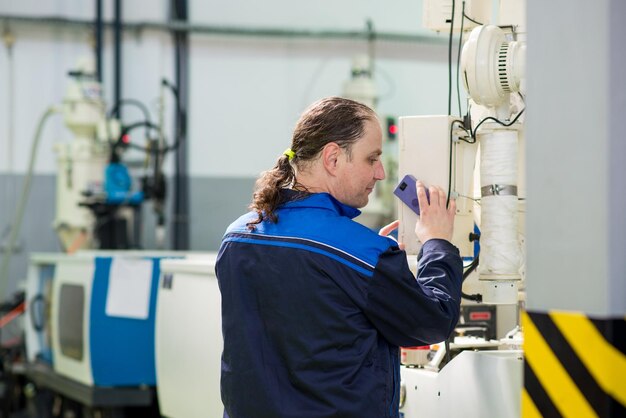Fixing Your Refrigerator Compressor: A Step-by-Step Guide
For many households, a refrigerator is a vital appliance, quietly working in the background to keep our food fresh and safe. But what happens when it stops functioning? A failing refrigerator compressor can be a significant concern, often leaving you in a dilemma: repair or replace? If you're noticing unusual noises, your fridge not cooling, or detecting excessive heat, the compressor might be the culprit. This article will guide you through diagnosing and potentially repairing your refrigerator compressor, saving you from costly replacements or professional repairs.
Understanding the Refrigerator Compressor
What Is a Compressor?
The compressor is the heart of your refrigerator's cooling system. It compresses the refrigerant gas and circulates it through the coils, facilitating the heat exchange necessary for cooling. Essentially, it helps maintain the internal temperature of your fridge by removing warm air and keeping the space cold.
Why Compressors Fail
Various factors can lead to compressor failure, including:
- Electrical Issues: Faulty wiring or damaged components can disrupt the power supply.
- Refrigerant Leaks: Loss of refrigerant can cause the compressor to overheat and fail.
- Wear and Tear: Over time, compressors naturally wear out due to constant use.
- Blockages or Malfunctions: Internal blockages or the failure of associated parts can impede the compressor's operation.
Identifying the specific cause of failure is critical for implementing the right fix.
Diagnosing Compressor Problems
Before jumping into repairs, it's essential to verify that the compressor is indeed the issue.
Symptoms of a Failing Compressor
- Lack of Cooling: The primary sign is when the refrigerator isn't cooling properly.
- Unusual Noises: Grinding, clicking, or loud humming noises point towards mechanical issues.
- Overheating: Feeling excessive heat at the back of the refrigerator where the compressor is located.
- Frequent Cycling: The compressor turns on and off more than usual.
Basic Diagnostic Steps
- Power Check: Ensure the refrigerator is plugged in and receiving power.
- Temperature Settings: Verify the temperature settings are correct.
- Condenser Coils: Check if condenser coils are dusty or blocked.
- Evaporator Fan: Listen to see if the fan inside the fridge is operational.
If these steps do not resolve the issue, it might be time to focus on the compressor.
Repairing the Refrigerator Compressor
Tools and Preparation
Before starting the repair, gather the following tools:
- Screwdriver set
- Multimeter (for electrical testing)
- Wrench set
- Replacement parts (if needed)
Safety First: Always unplug the refrigerator before attempting any repairs to prevent electrical shock.
Step-by-Step Repair Guide
Step 1: Access the Compressor
- Unplug the refrigerator and pull it away from the wall.
- Remove the access panel at the back of the fridge using a screwdriver to expose the compressor.
Step 2: Test the Start Relay
The start relay kickstarts the compressor. A faulty relay can be mistaken for a compressor failure.
- Locate the start relay on the side of the compressor.
- Using a multimeter, test the relay for continuity. If faulty, replace it.
Step 3: Check for Refrigerant Leaks
- Look for oil spots around the compressor area, indicating a potential leak.
- If you suspect a leak, it might need professional servicing for refrigerant handling.
Step 4: Inspect Wiring and Connections
- Ensure all wiring connections are secure and not corroded.
- Check the compressor's power supply with a multimeter.
Step 5: Test the Compressor
Using a multimeter:
- Set the multimeter to the resistance setting.
- Test the compressor's three terminals. Different resistances imply the health of the compressor windings.
- An infinite reading suggests a complete failure, requiring compressor replacement.
Step 6: Install New Compressor (if necessary)
If diagnostics point to compressor failure:
- Acquire a compatible replacement compressor.
- Carefully remove the old compressor and install the new one, ensuring all connections are secure.
Testing the Repairs
Once the compressor or relevant components are repaired or replaced:
- Reassemble the access panel.
- Plug in the refrigerator and allow it to run for several hours.
- Monitor cooling performance and listen for any unusual sounds.
Preventive Maintenance and Tips
Keeping your refrigerator in peak condition can prevent future compressor issues.
Regular Maintenance Tips
- Clean Condenser Coils: Do this every six months to enhance efficiency.
- Check Door Seals: Ensure they are tight and intact to maintain optimal cooling.
- Monitor Temperature Settings: Avoid setting them too low to prevent overworking the compressor.
- Professional Inspections: Consider a yearly professional check-up.
Safety and Efficiency
- Ensure the fridge is placed on a level surface to avoid straining components.
- Allow adequate space for airflow around the appliance.
Quick Reference Summary
🔧 Compressor Repair Cheat Sheet
- Symptoms: Lack of cooling, odd noises, overheating
- Causes: Electrical issues, refrigerant leaks, wear and tear
- Tools: Screwdrivers, multimeter, wrench set
- Steps:
- Test Start Relay
- Check for Leaks
- Inspect Wiring
- Test Compressor
- Preventive Tips:
- Clean coils bi-annually
- Check door seals
- Regular inspections
In understanding the full picture of how to repair a refrigerator compressor, it empowers you to make informed decisions about necessary maintenance or replacements. While some compressor issues might require professional attention, many can be resolved with a keen eye and basic tools. Staying informed and proactive can save costs and extend the life of your essential kitchen appliance.
